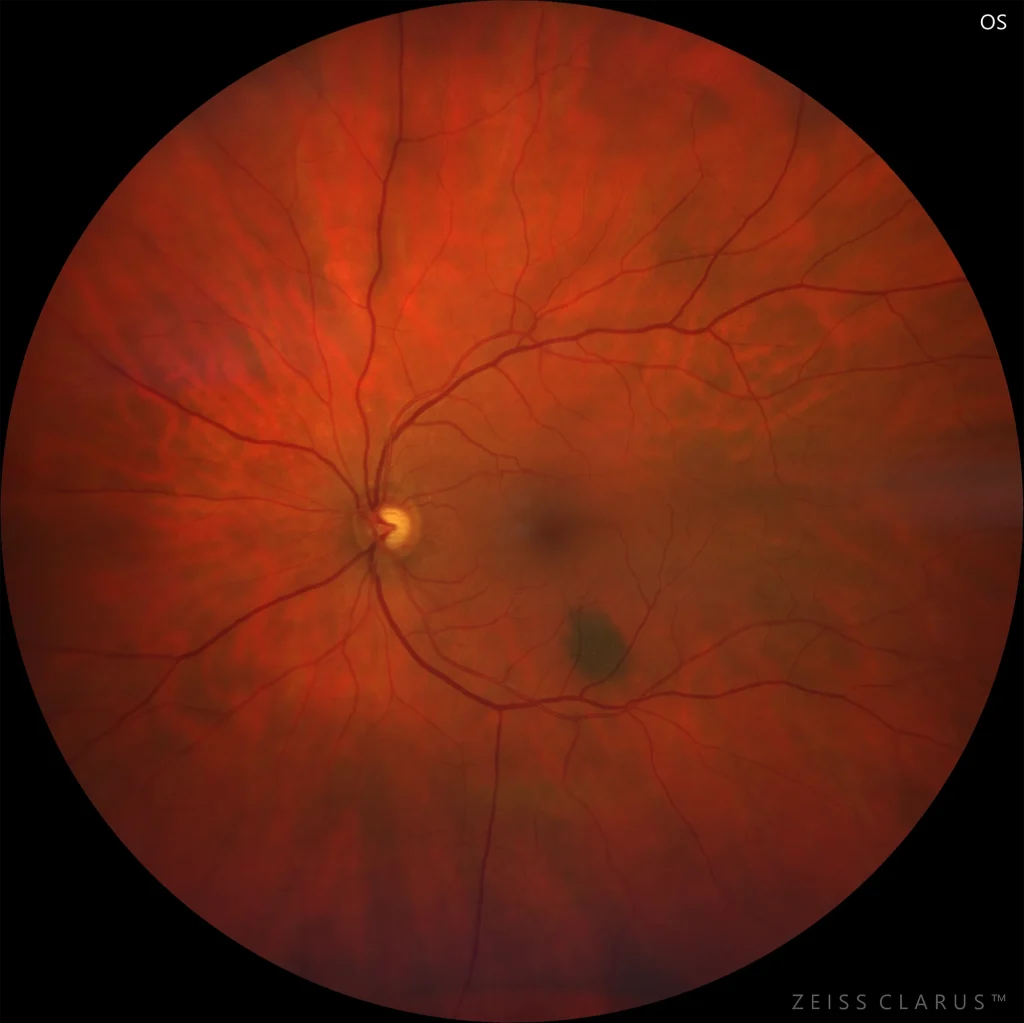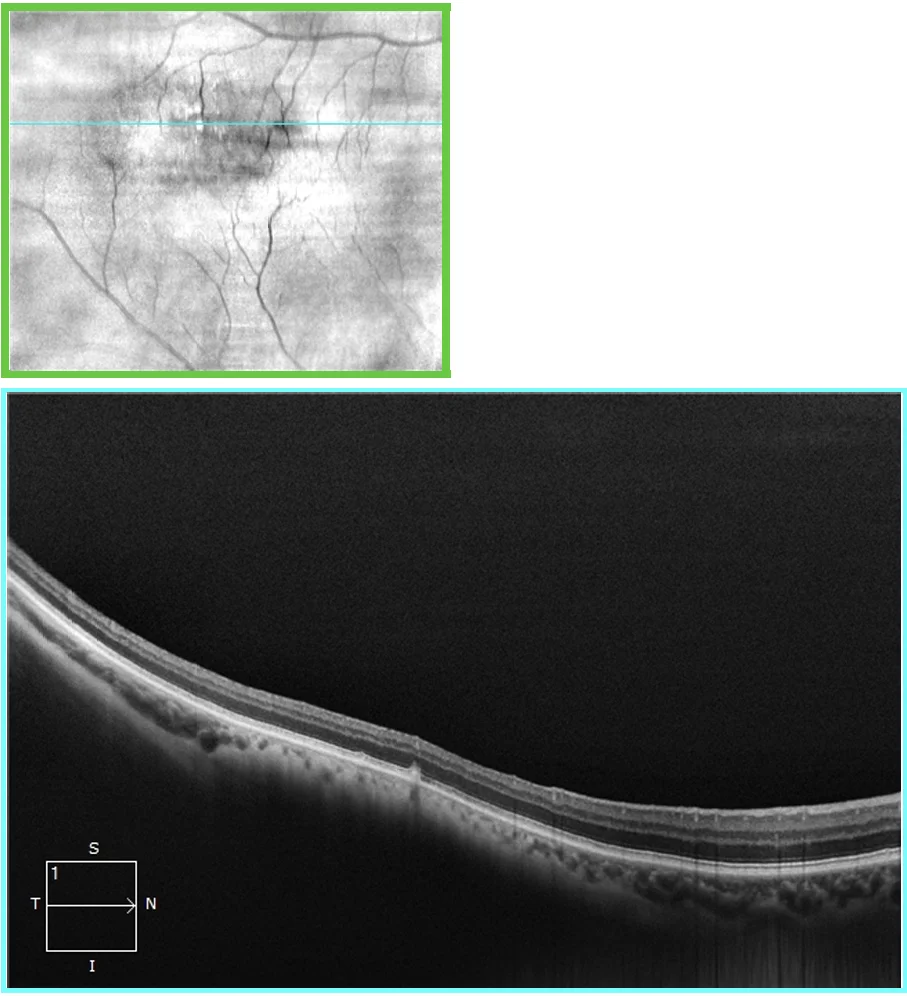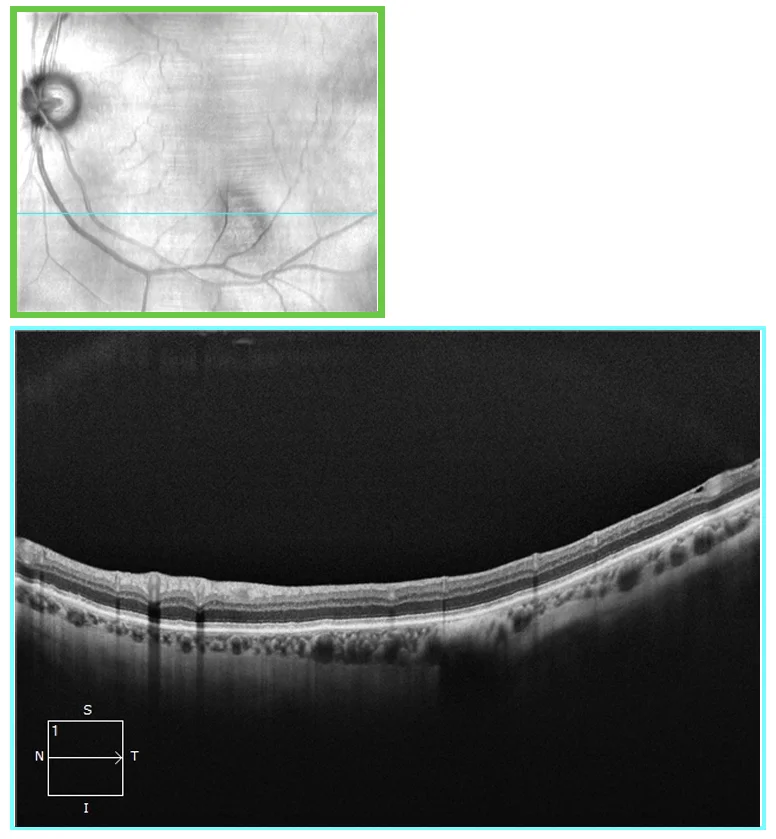Bilateral choroidal nevus
Color retinography showing a choroidal nevus with drusen on the upper temporal paramacular surface of the right eye.
Color retinography showing a choroidal nevus with drusen on the inferior temporal paramacular surface of the left eye.
Optical coherence tomography of the right eye nevus showing the choroidal nevus, drusen on the surface and absence of subretinal fluid.
Description
Choroidal nevus is a common benign intraocular tumor found in approximately 5% of adult Caucasian patients. The main risks are loss of vision if it is subfoveal, the development of subretinal fluid, and its transformation into choroidal melanoma. To predict the risk of transformation into melanoma, we must pay attention to whether it presents any of the following characteristics: thickness greater than 2 mm, the presence of subretinal fluid, decreased visual acuity to 20/50 or less, the presence of orange pigment, the presence of the kappa angle on ultrasound and/or a diameter greater than 5 mm.
According to the recent study by DeSimone JD et al, where these features were analyzed, a 5-year Kaplan-Meier estimate for transformation to melanoma was demonstrated, where patients with no feature had a 1% risk, with 1 feature 11%, with 2 features 22%, with 3 features 34%, with 4 features 51%, and with 5 features 55%.




